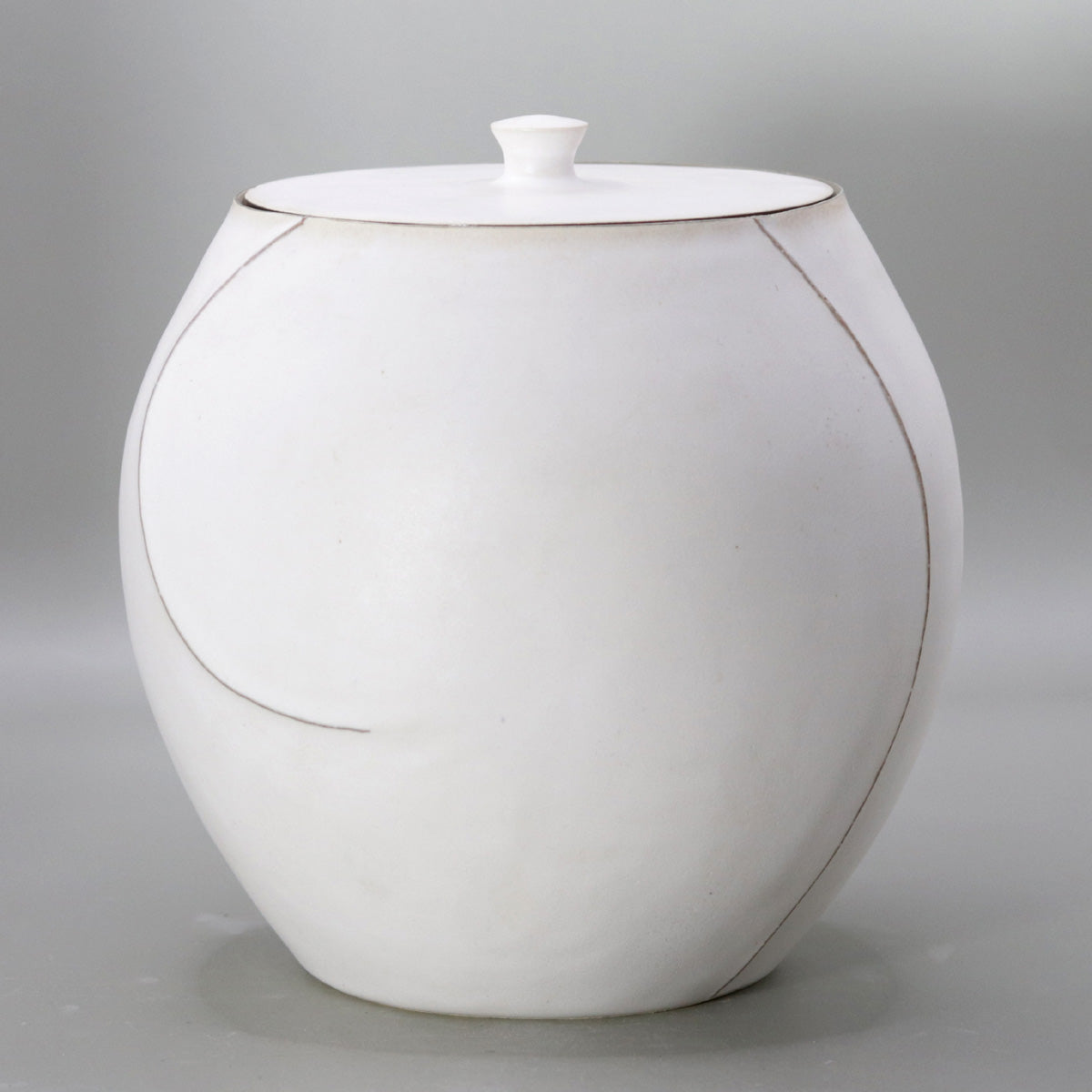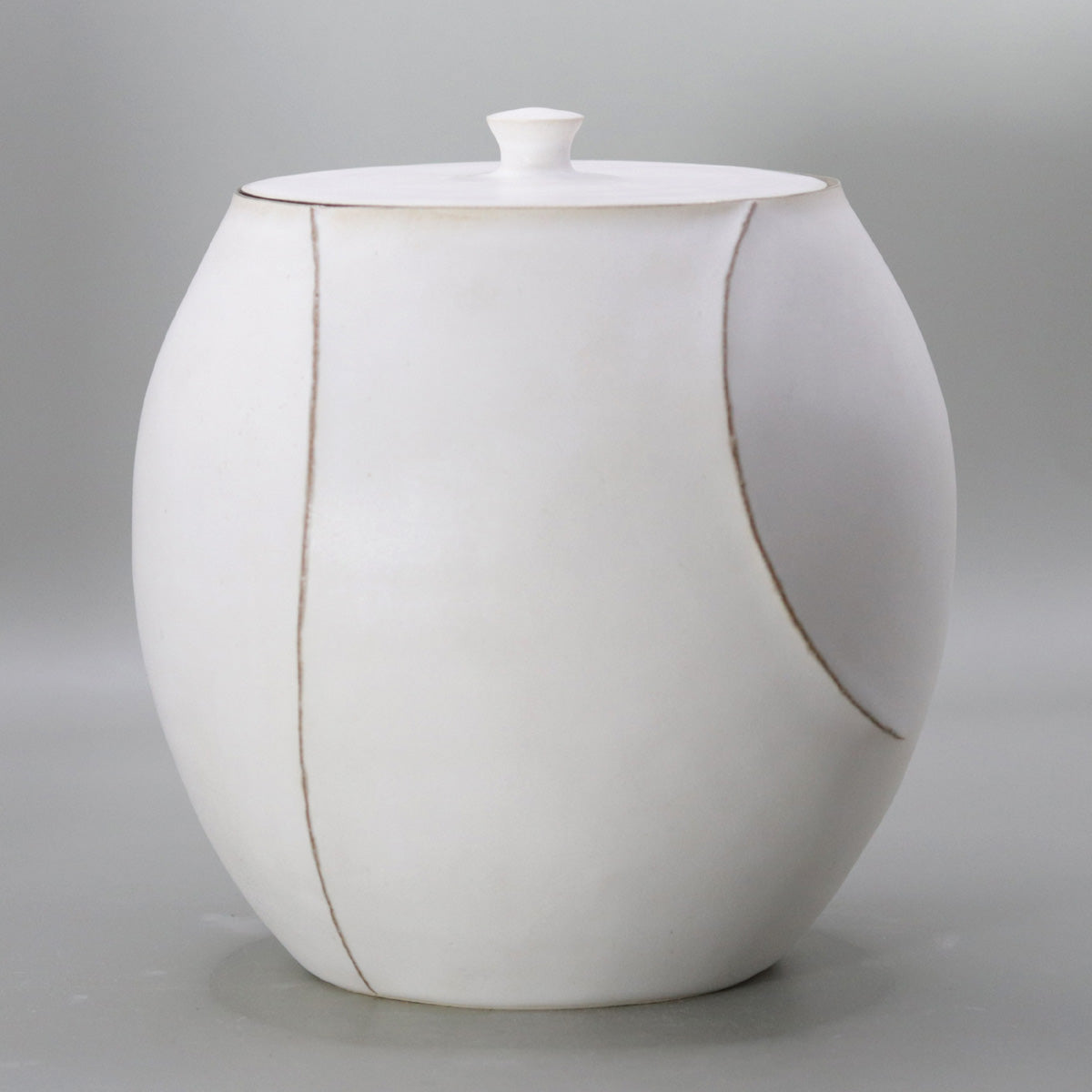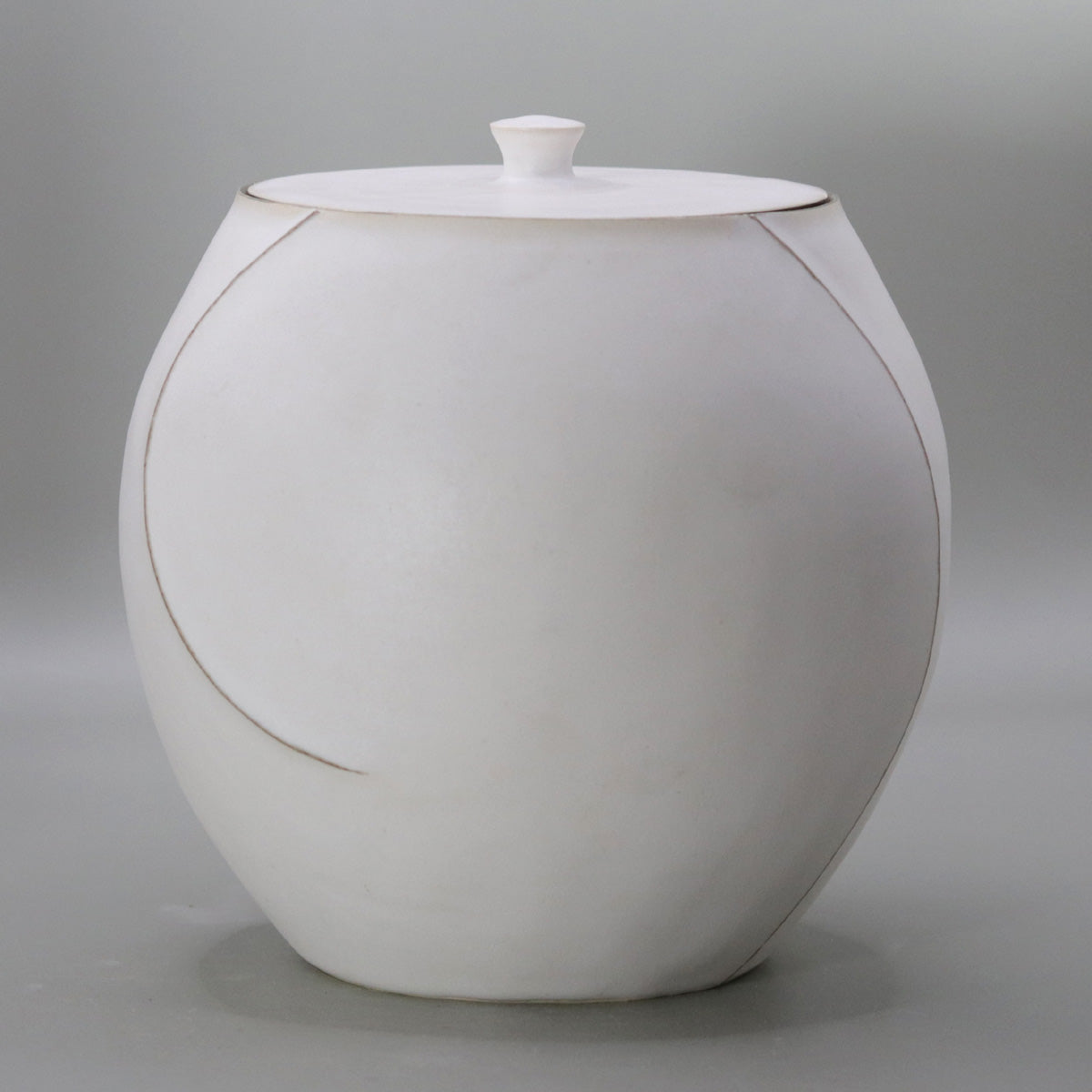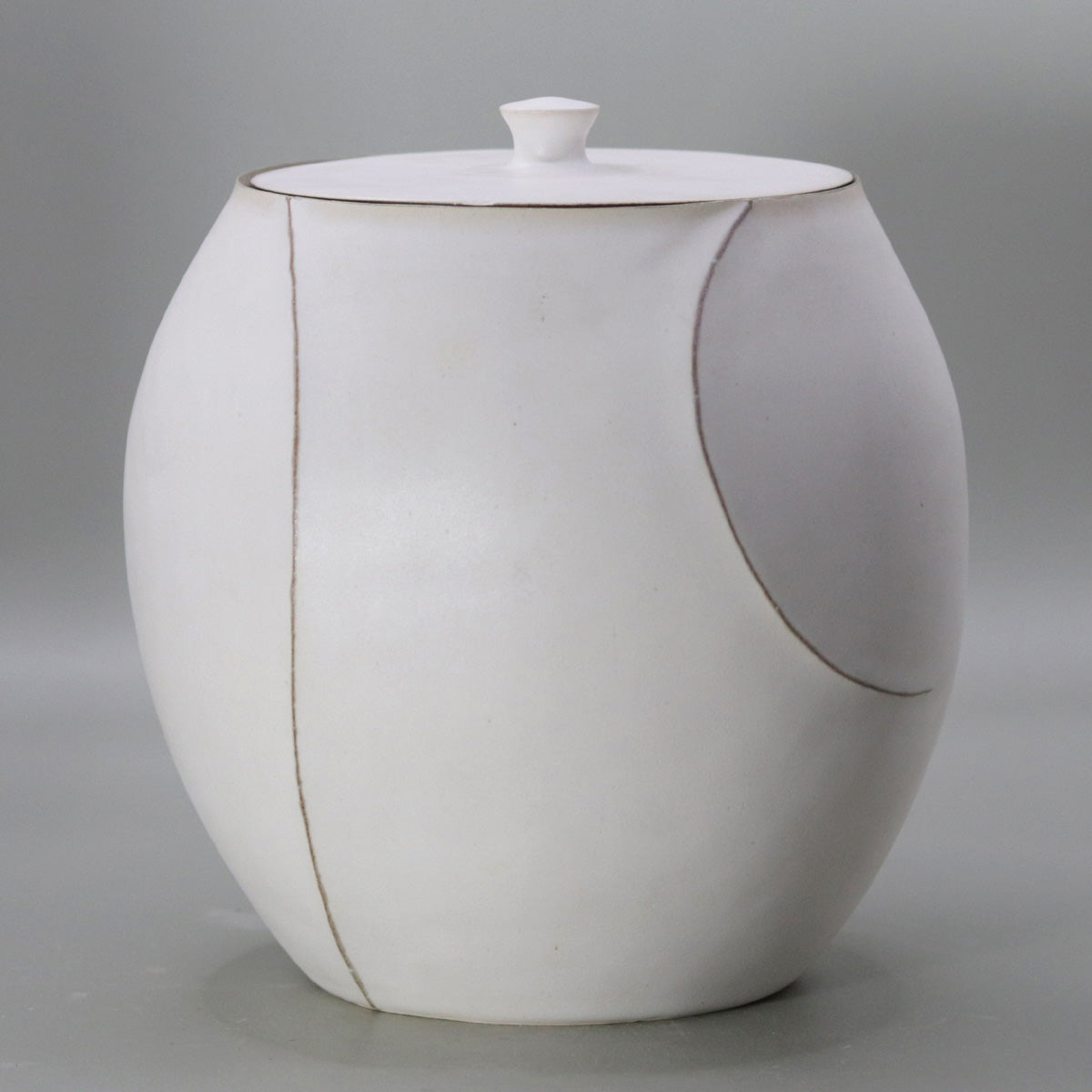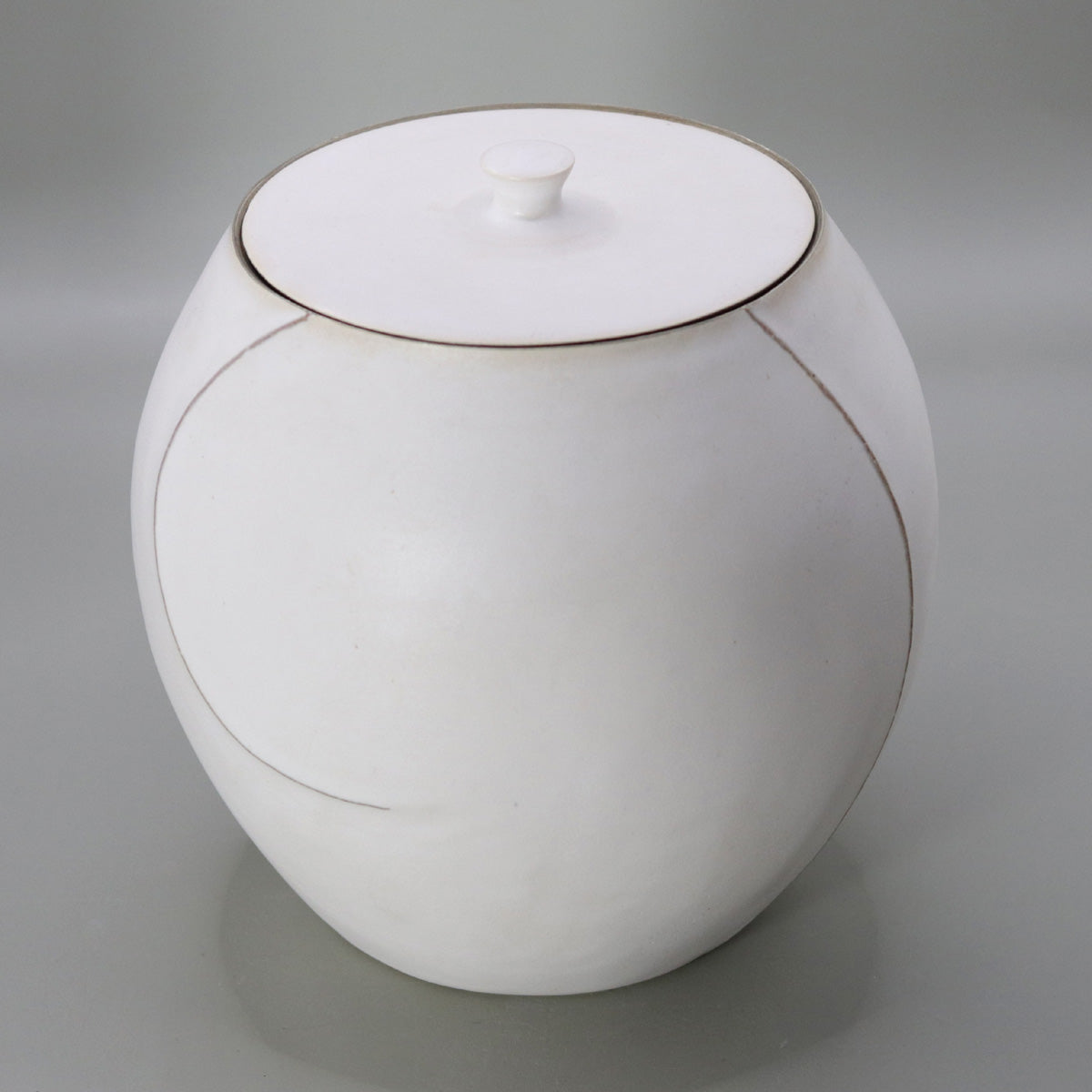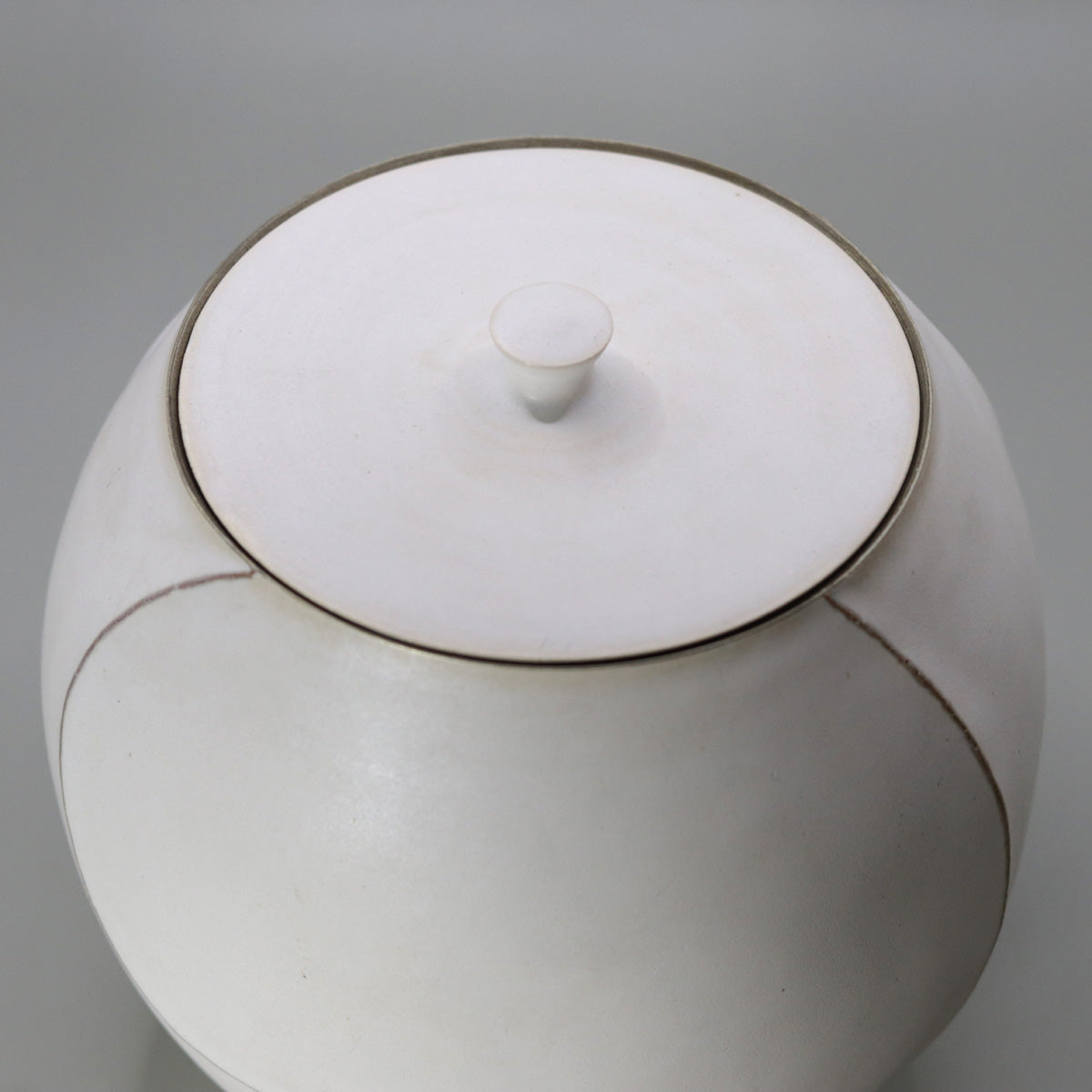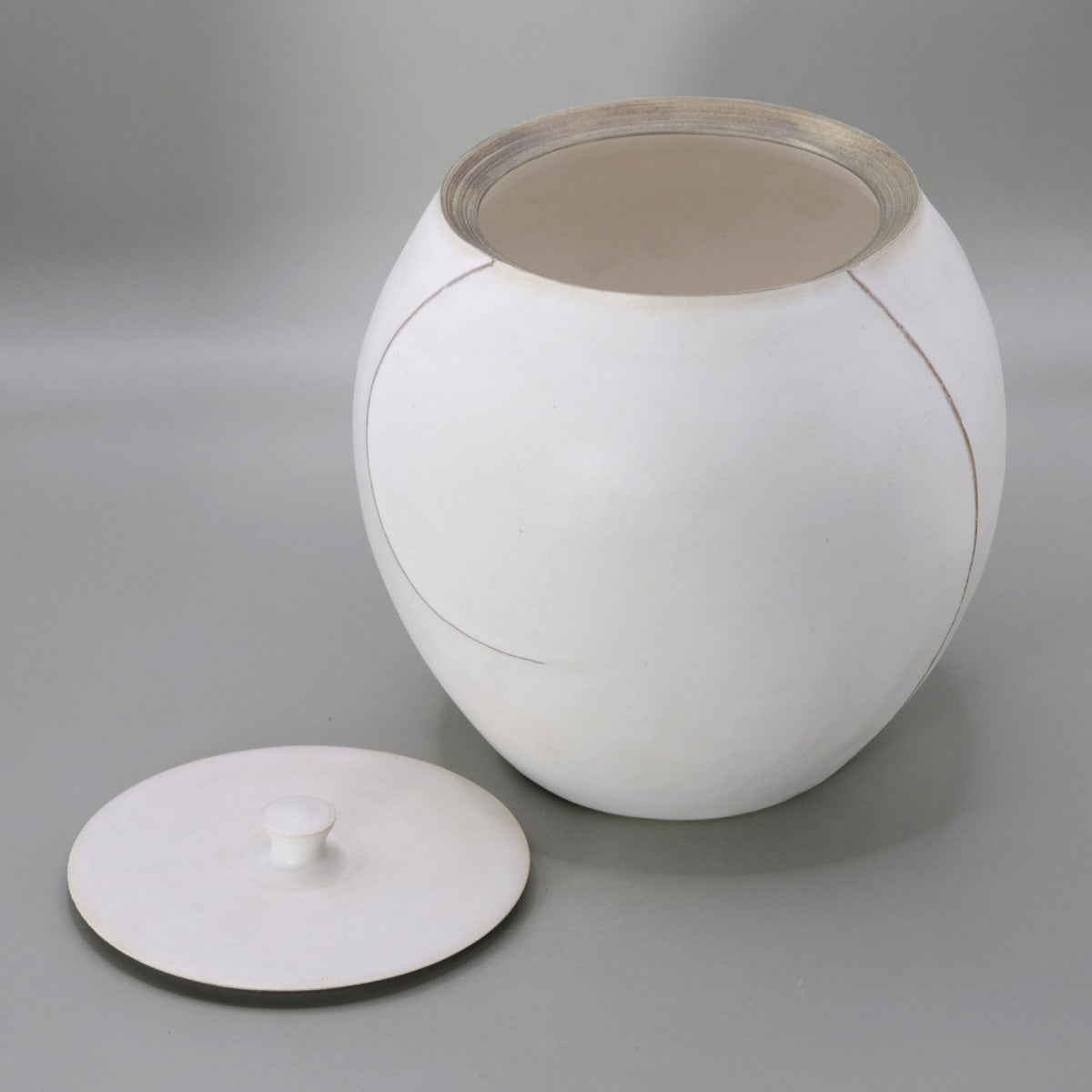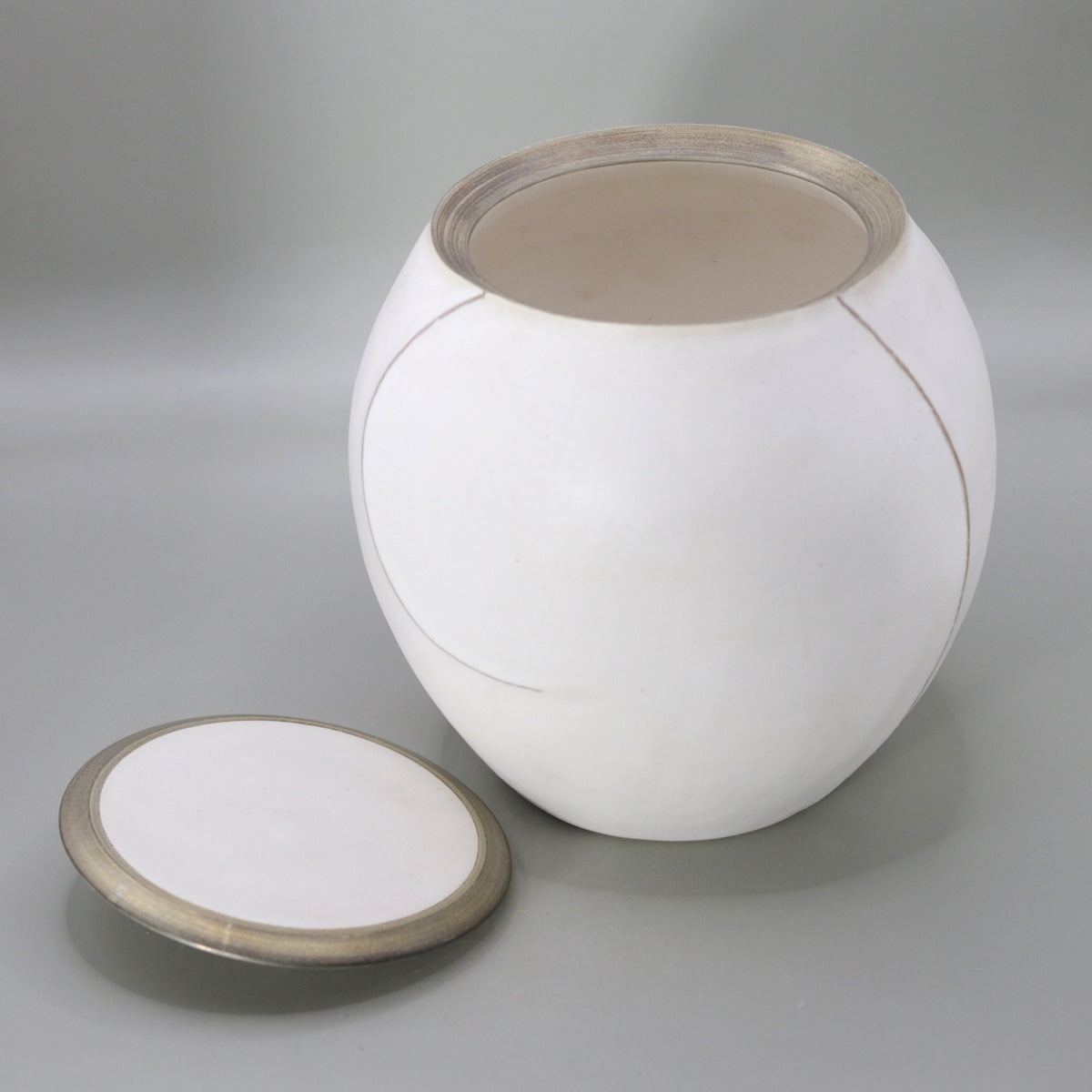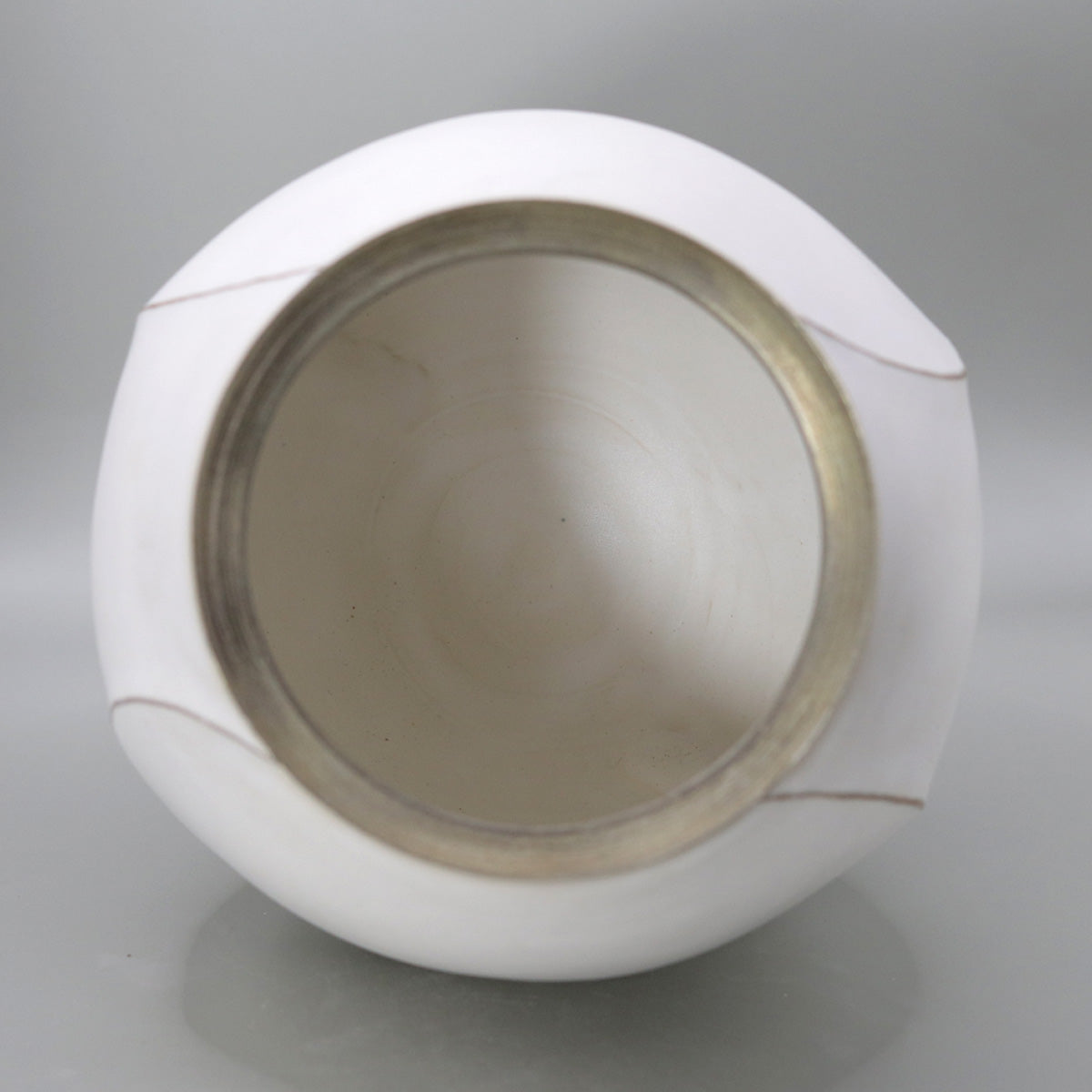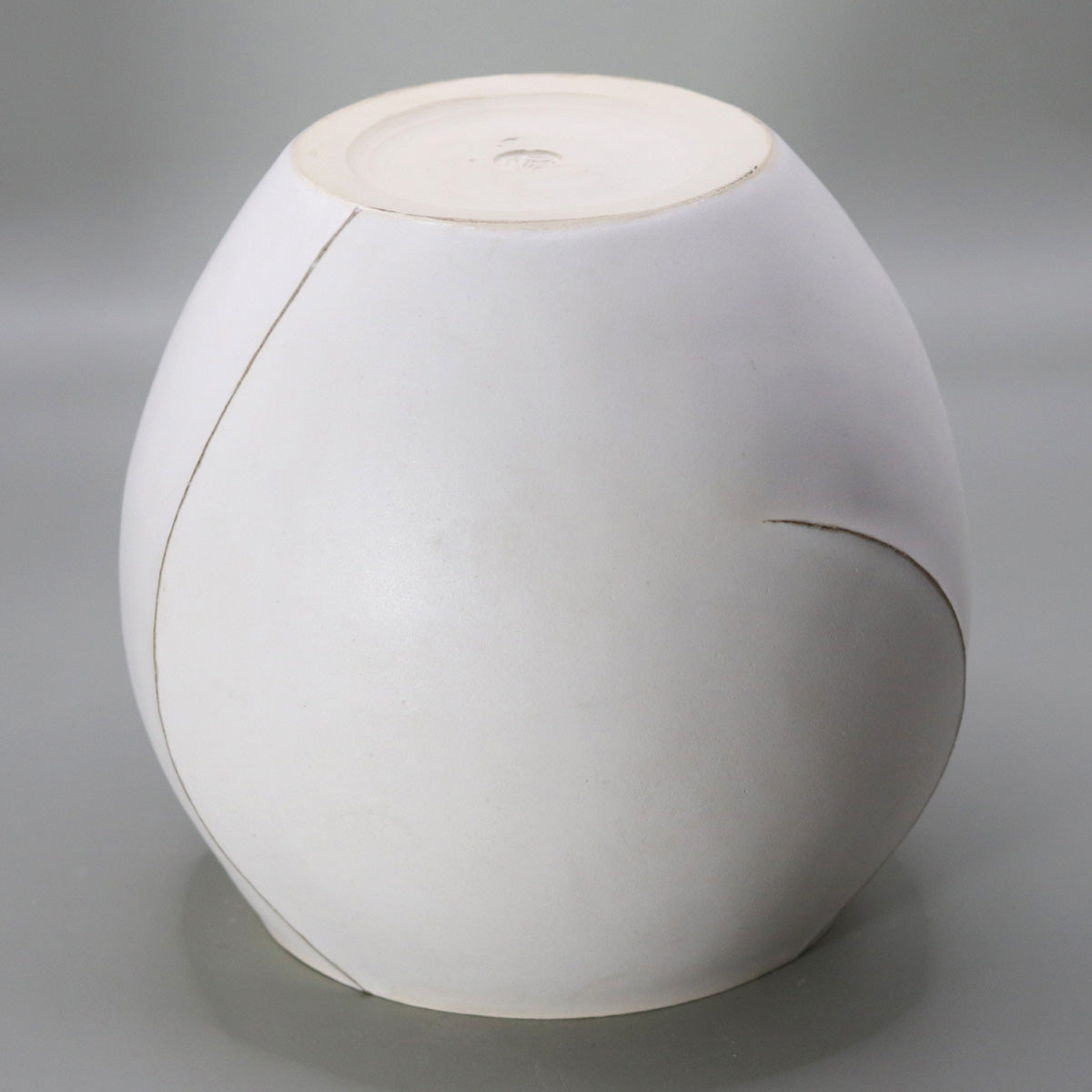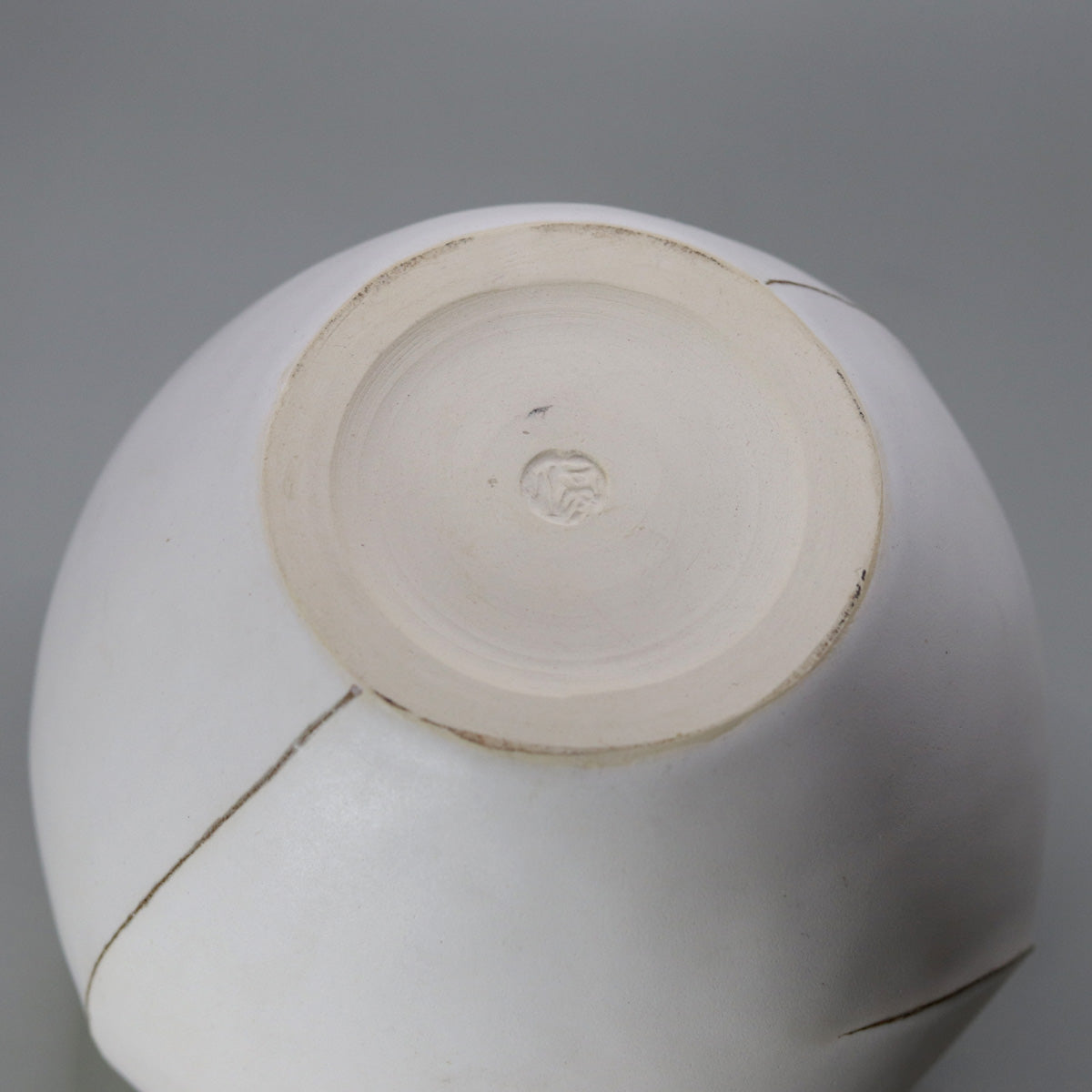White Glazed Ridge Water Jar by Okada Yu
White Glazed Ridge Water Jar by Okada Yu
Couldn't load pickup availability
Width: 17.0cm Height: 17.2cm
"White Glazed Ridge Water Jar" by Masaru Okada - A modern "white" that combines tranquility and tension
Okada Masaru's White Glazed Ridge Water Jar leaves a strong presence on the viewer, despite being entirely white. It is a work of quiet power that fuses the functional beauty of a water jar used in tea ceremonies with the aesthetic beauty of modern ceramics on a high level, standing as if speaking of the beauty of the blank spaces. Below, we will introduce the appeal of this work in detail from four perspectives: history, technique, design, and spirituality .
1. Historical Background and the Role of Mizujars
Mizusashi (water jar) is a vessel that holds "fresh water" to be poured into the tea kettle, and symbolizes "purity" and "moderation" in the tea ceremony. Following the trend of highly prized celadon water jars from China during the Muromachi period, Japanese porcelain water jars rose to prominence in the Momoyama period in response to Raku tea bowls. From the mid-Edo period onwards, diversification of designs and materials progressed, especially in Kyo-yaki, and the use of either a lid made of the same material as the vessel or a lacquered lid (a separate lid made of wood or lacquer) became popular as a wonderful combination.
While Okada Masaru is based on this tradition, he has chosen the "plain canvas" of white glaze and, by intentionally creating ridges, is attempting a minimalist and sculptural challenge.
2. Techniques and materials: Delicate shadows created by pure white
2–1 Mixing the white glaze
The white glaze of this piece is made by mixing a matte finish mainly made of silica on a semi-porcelain base with low feldspar content, and then reducing firing at around 1,270℃, achieving both a snow-like matte texture and a slightly transparent warm cream color. Because it softly scatters light, it does not assert its presence too much even in the faint light of a lantern at a tea ceremony, and blends naturally with the tools.
2-2 Carving out the ridgeline
The curves running down the body are carved out in one go with a plane after molding, and the width is adjusted to maintain a sense of tension after calculating the difference in shrinkage from drying to bisque firing. This thin, dignified line gives a slight distortion to the sphere, and is outstanding in that it gives a dynamic rhythm to the static form.
3. Design: A sphere reminiscent of the moon and a flash of line
Aspiration towards a spherical shape <br data-start="897" data-end="900">The rounded body, reminiscent of the "moon jars" of the Joseon Dynasty, suggests a cosmic expanse in the limited space of a four-and-a-half-tatami tearoom. By narrowing the top slightly, the surface of the water becomes less visible, psychologically emphasizing the "depth" of the raw water.
Effect of Lines (Ridges) <br data-start="1023" data-end="1026">A single carved line, similar to the contrast between "white space and brushstrokes" in white porcelain, acts as a guidepost to guide the viewer's gaze. The line shifts slightly in accordance with the movement of opening and closing the lid, creating a once-in-a-lifetime expression that can be said to be an expression of Okada-san's idea of "completing the piece while including the movement of the tea ceremony."
4. Spirituality and modernity
Okada Masaru uses earth and fire to create forms reminiscent of minimal art, combining "wabi" and "serene tension." Because the white glaze is pure, the oil from fingers and traces of water droplets are slightly visible, and it absorbs the time of the user. In contrast to the crazing of a tea bowl, which gradually deepens its appearance, this is a proposal for a new time axis that could be called "a space on which traces are engraved."
5. Examples of arrangements at tea ceremonies
This piece evokes different scenery with each season, further highlighting the design of the main tea bowl and vase.
early spring
The jade color of the celadon tea bowl is accented by the red and white plum blossoms in a thin bamboo slab. The white glaze of this piece blends in like light snow, gently announcing the arrival of spring in the still cold air. In a setting where the scent of plums hangs in the air, the soft luster of the white reflects the stillness before the buds sprout, making the change of seasons even more vivid.
Midsummer
The deep black of the Setokuro Ido and the small glass vase with dew-filled dewdrops create a cool feeling, while the matte white of this work is a visually refreshing agent. The strong contrast between black and white creates a refreshing shadow that makes you forget the strong midsummer sunlight, providing a refreshing coolness to the audience.
Mid-autumn
The white of this piece shines quietly like a full moon, where the combination of the austere scenery of the Tanba kiln-changed tea bowl and the Japanese silver grass and lady's mantle flowers evokes a moonlit field. The subtle flowing patterns of the natural glaze blend into the moonlight, and in harmony with the earthy taste of the kiln-changed tea bowl, deepen the mysterious charm. Together with the swaying of the autumn grasses, it plays a supporting role in creating the deep atmosphere of moon-viewing.
summary
The White Glazed Ridge Water Jar is firmly rooted in the context of traditional tea ceremony utensils, but embodies the beauty of pared-down beauty that can only be expressed through contemporary ceramics. It will have the power to quietly dominate the space, not only in tea ceremonies, but also in the gallery space of contemporary architecture or hotel lobbies.
The time of the tea master and the viewer seeps into the lines and surfaces of each piece.
This vessel evokes such a future.
If you have detailed information such as dimensions, price, or the name on the box, we can add it to your request and dig deeper. Please feel free to contact us.
Share
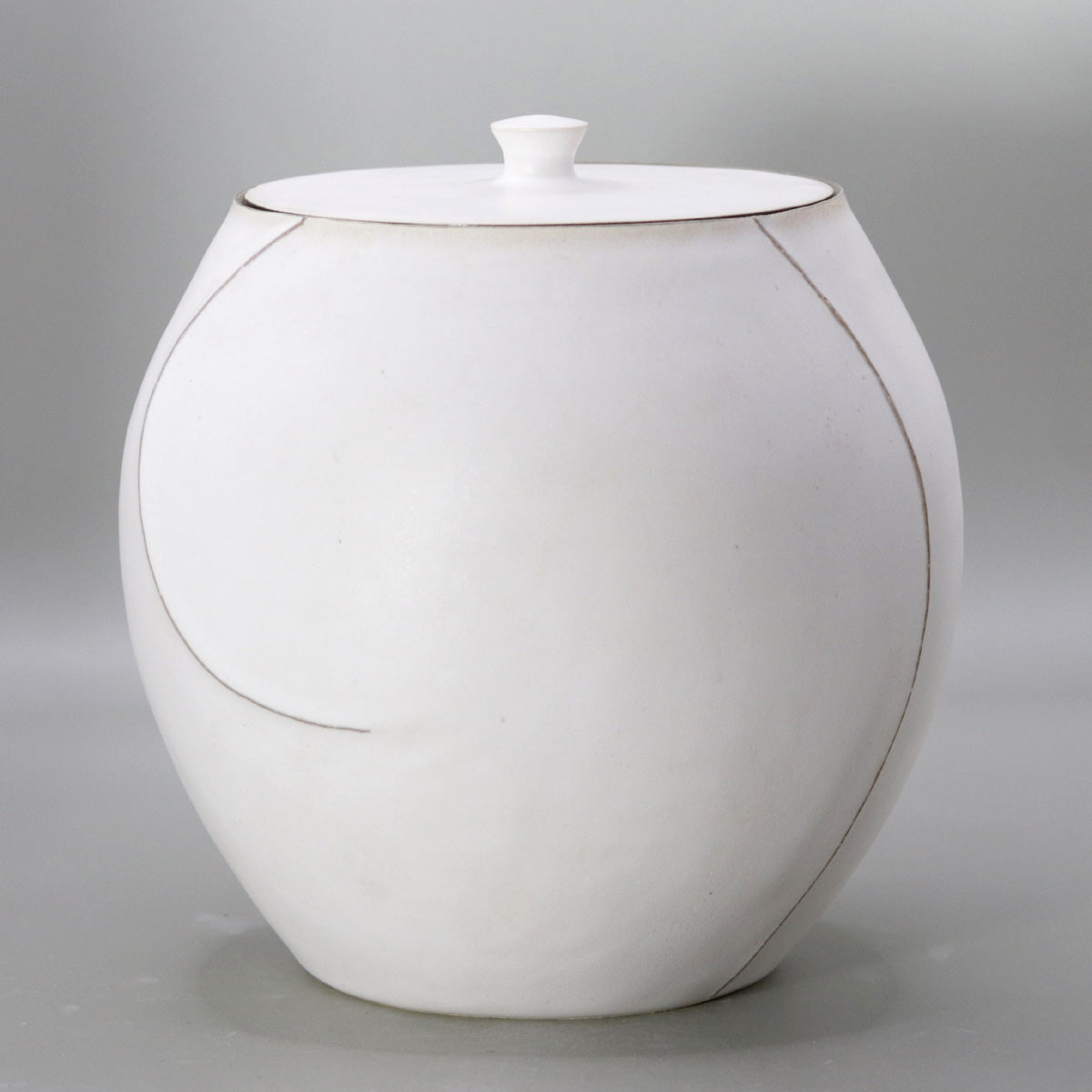
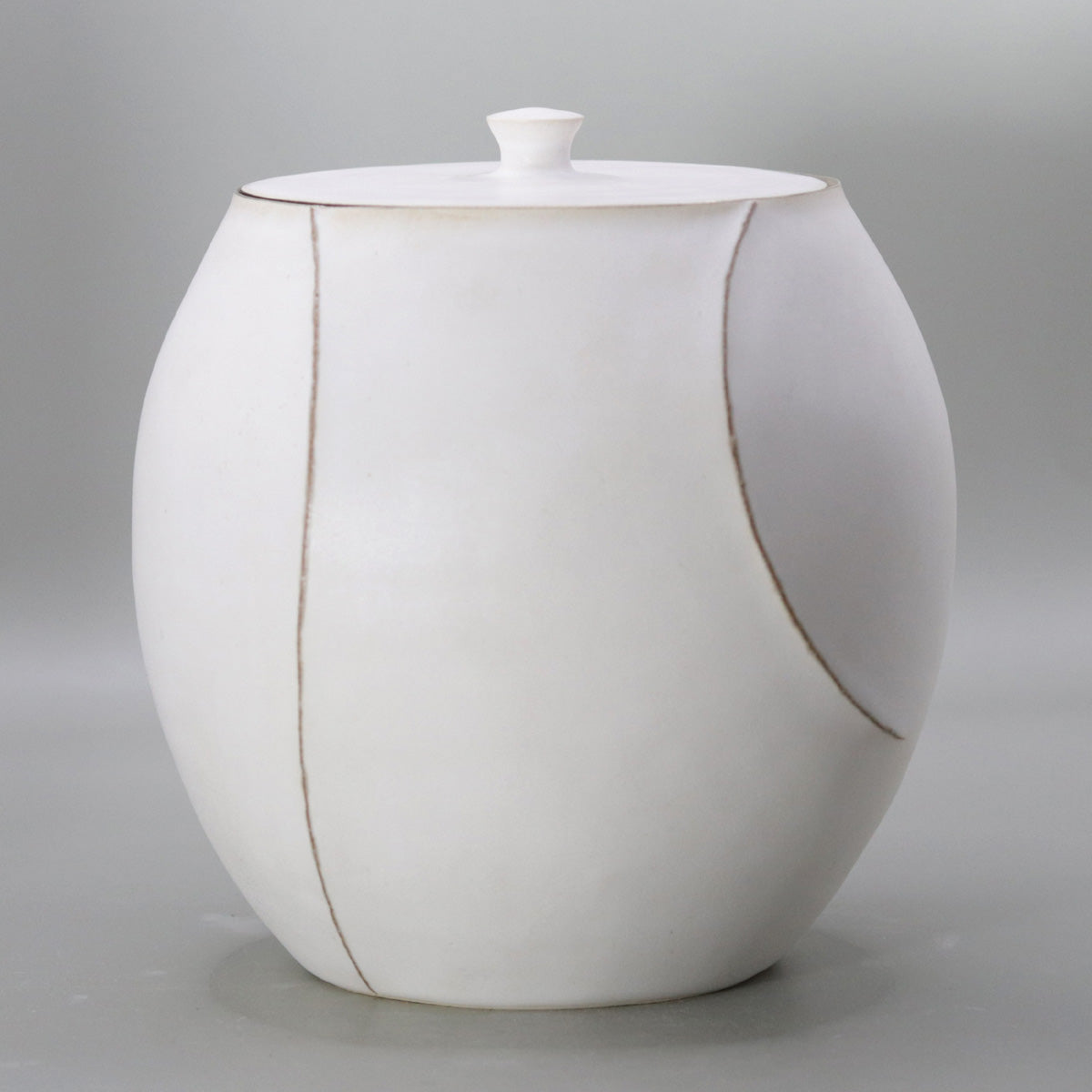
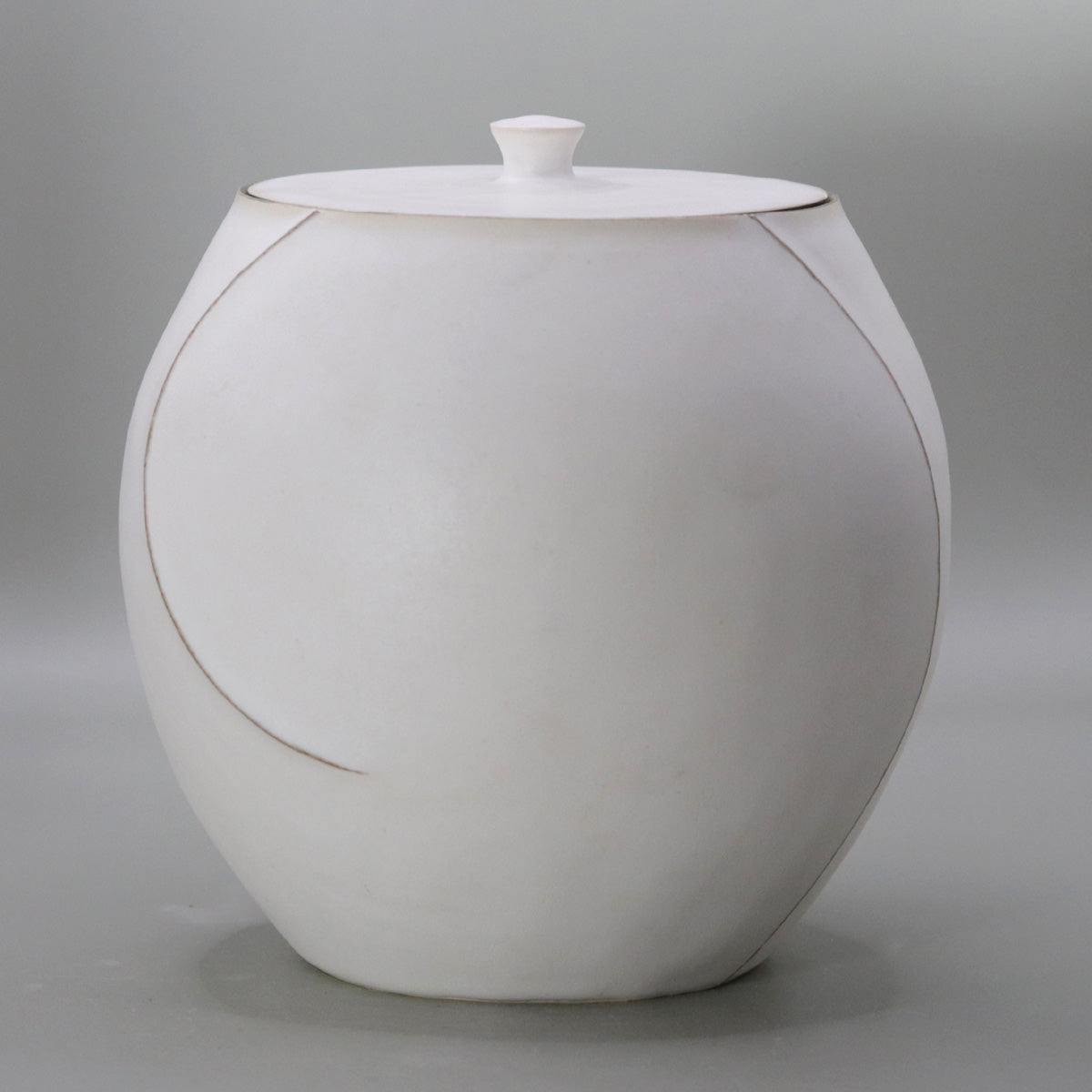
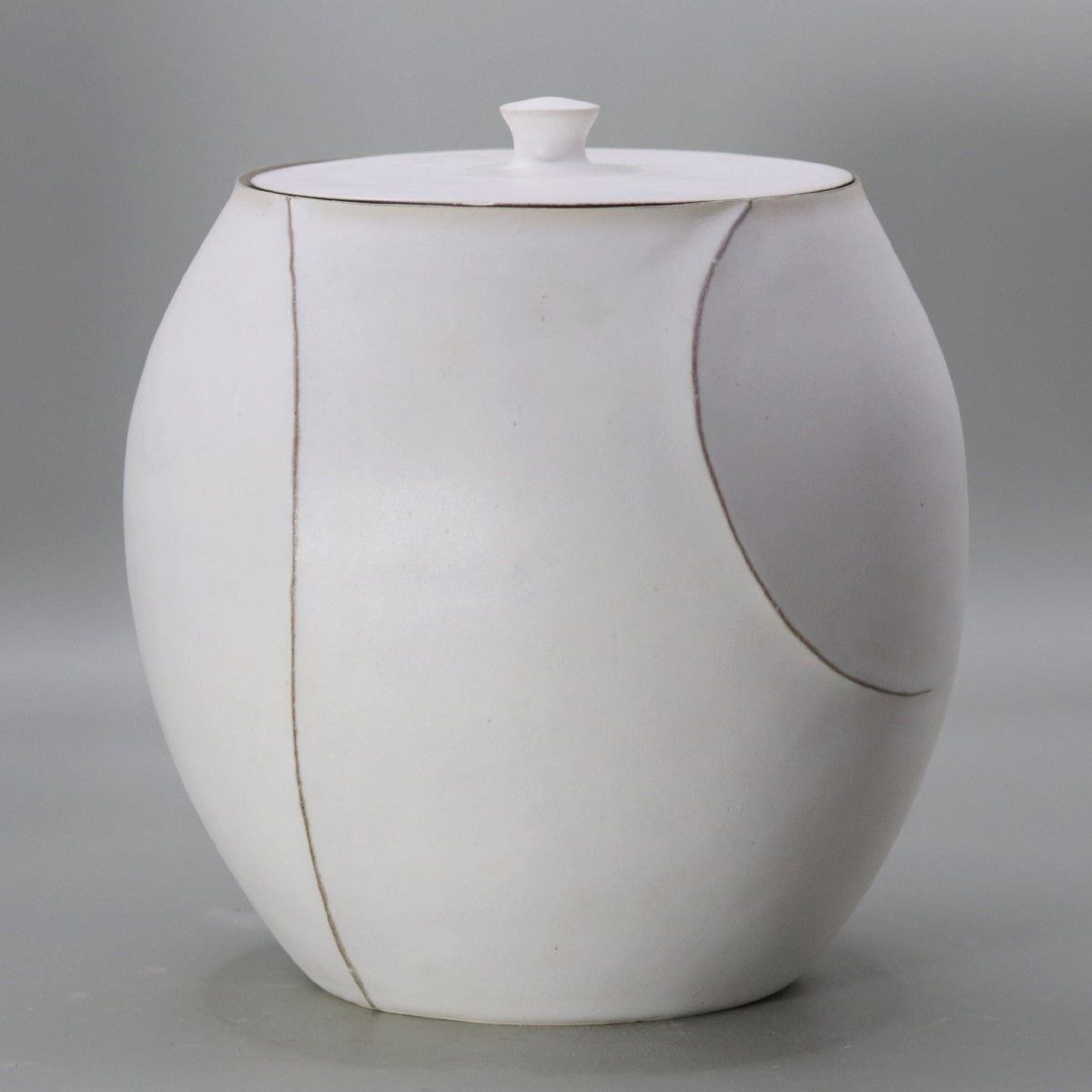
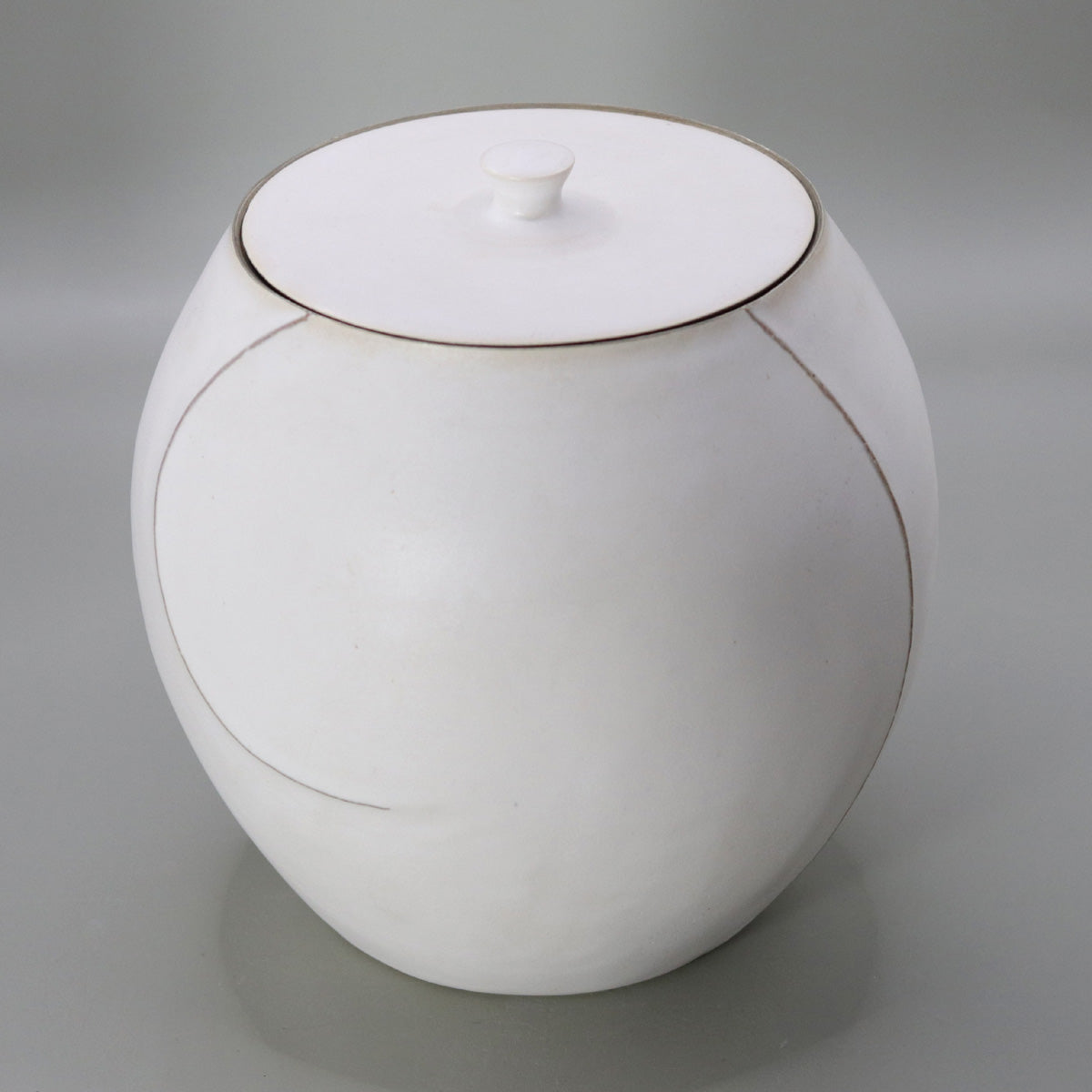
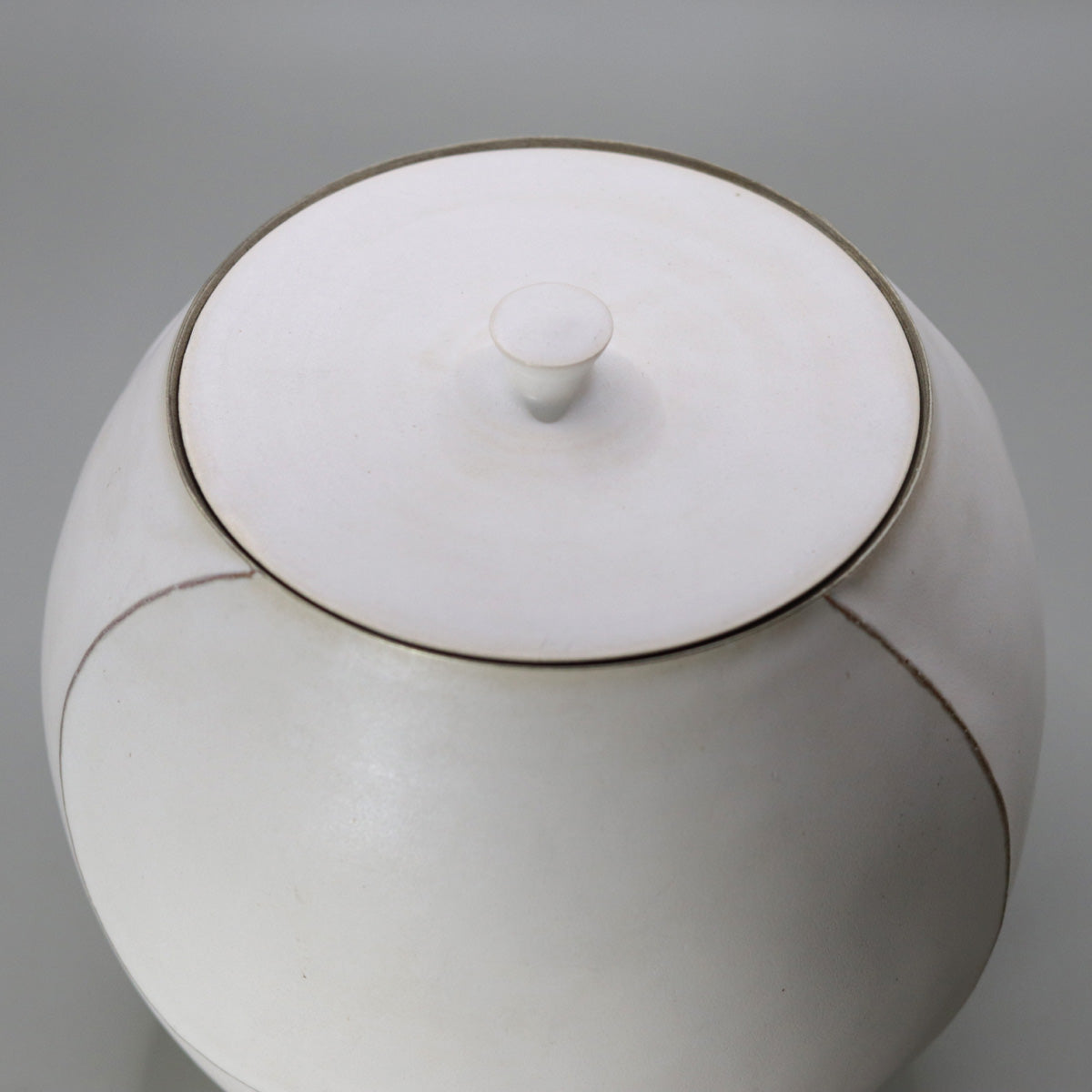
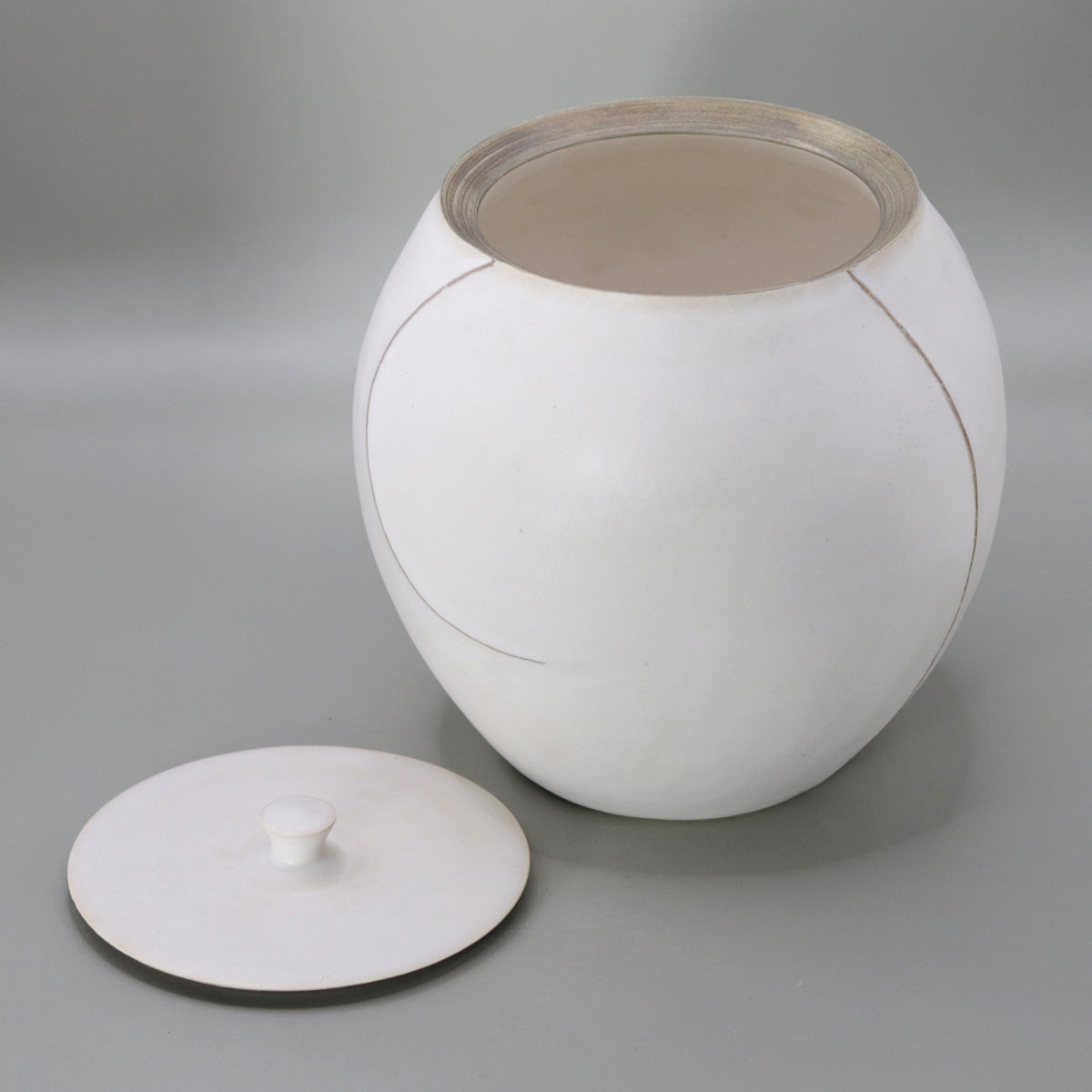
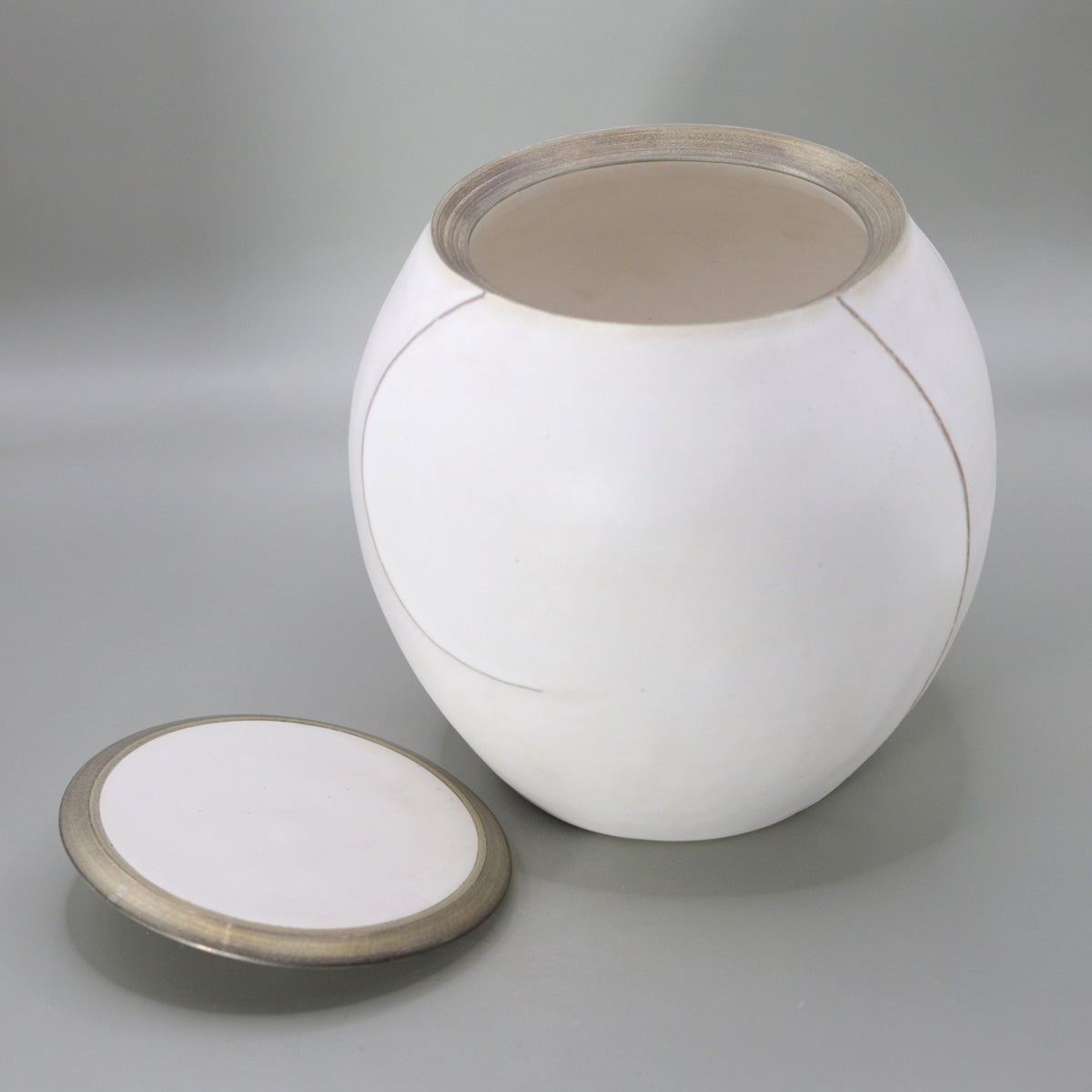
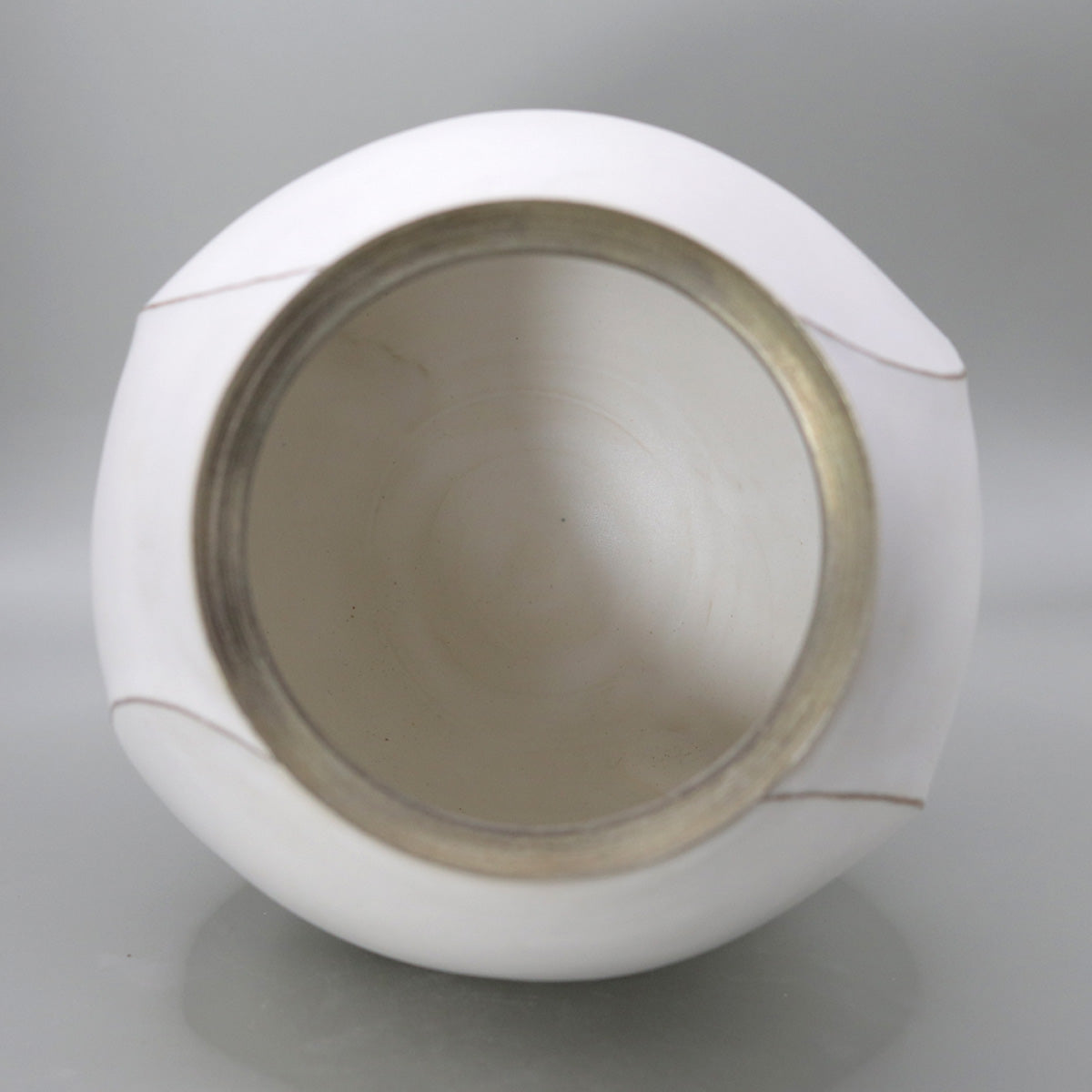
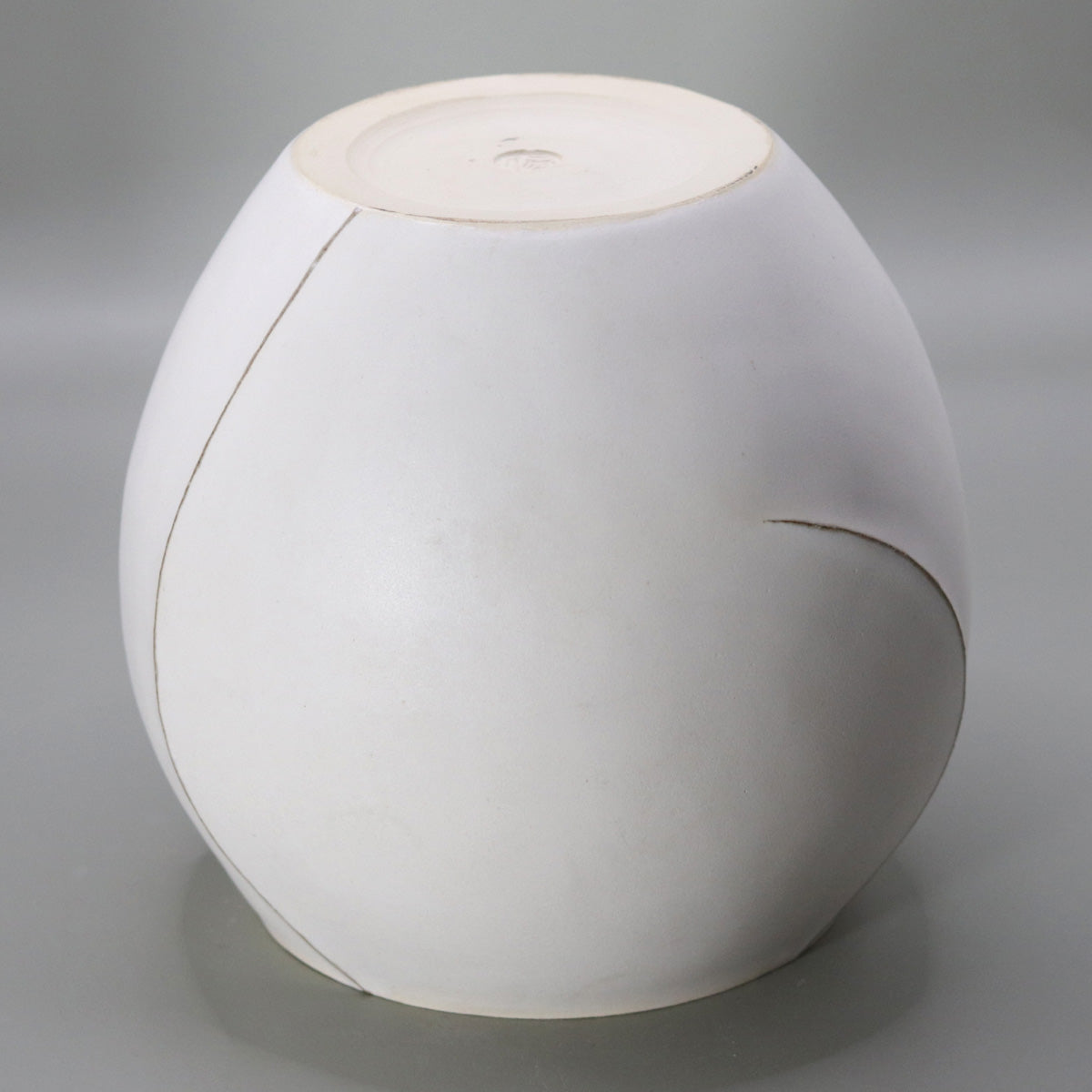
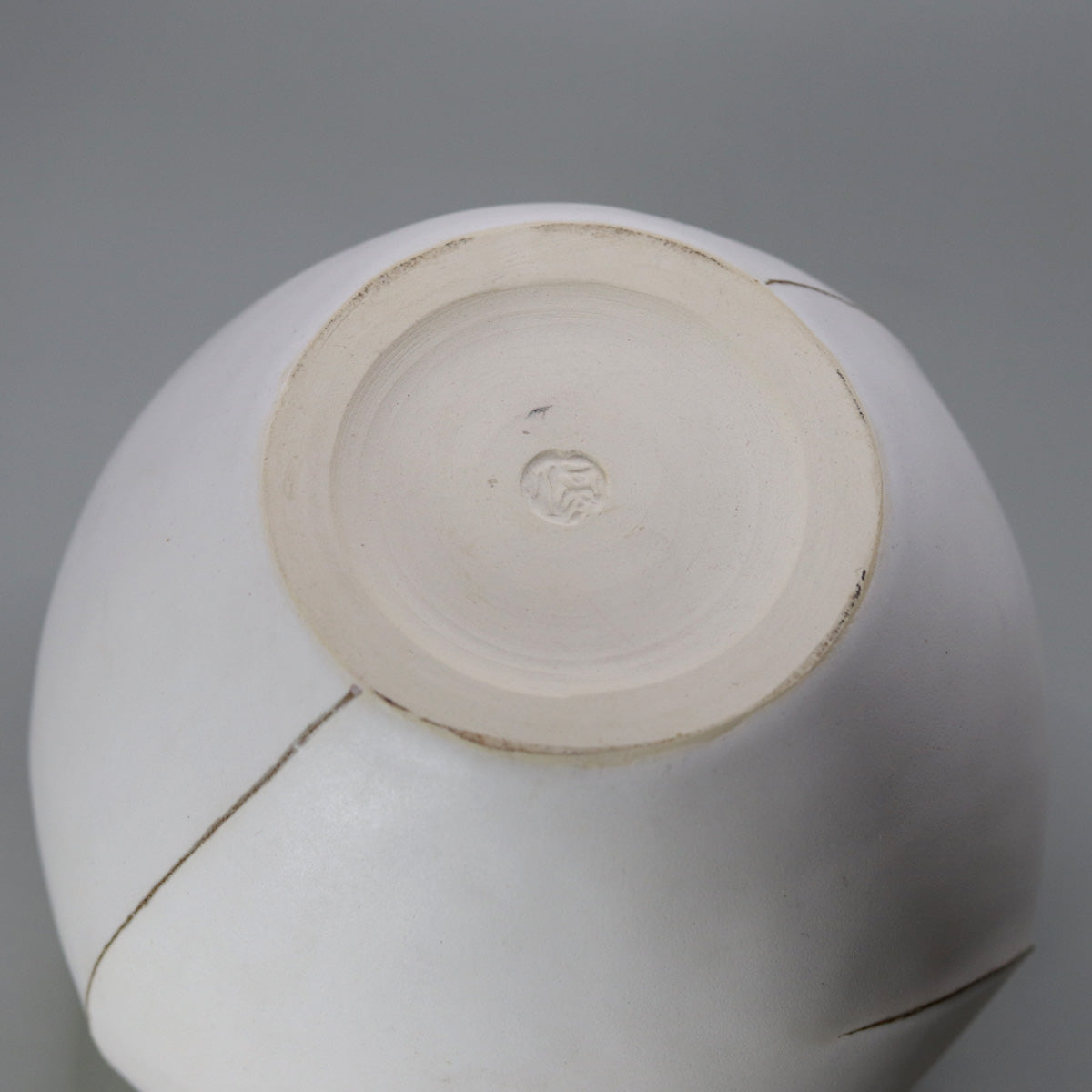
Multi-Column
-
[I will send it to you quickly and carefully]
We carefully package each product in a way that suits it best.
Also, delivery times vary depending on the piece (vessel, etc.).
Items that already come with a box will be shipped within 1-3 days of the order date.
For items that require a box to be made after your order, it will take approximately 30 days for production to be completed and then shipped.
In either case, once we have confirmed your order, we will contact you by email to inform you of the delivery date.
-
[Requests when purchasing pottery]
Even products that look the same may differ slightly in color, shape, size, etc.
The way the glaze is used, the power of the kiln, the firing method, the season, and the humidity also affect the appearance of the pottery.
Please understand the individuality of each piece of pottery and enjoy the unique warmth of handmade.

